I am slowly learning about some of the shortfalls my training as a western scientist has had on my ability to interpret vegetation communities of the Klamath Mountains. What I am learning, that was never properly taught in my schooling, is that everything we see today in the Klamath Mountains was affected, to some degree, by long-term human habitation over the past ~9,000 years. For example, up north in British Columbia’s coastal temperate rainforest Fisher et al. (2019) found that the plant communities around village sites had different plant assemblages than control sites and were dominated by plants with higher nutrient requirements and a cultural significance. Consider this next time you look at an oak woodland on a river bench
Another major misconception taught in western science is the description of the assumed wild and wilderness as absent of human impact–when this is far from the truth. Much of what we have designated as wilderness was sculpted by Native People’s stewardship. For example, numerous travel routes were maintained for securing basketry, medicine, food resources, or reaching ceremonial sites (see map below).
Vegetation communities across space and time
I recently re-visited Fish Lake and the high country ridgelines above Bluff Creek in an attempt to see this region in a new light, through a fresh lens, as I re-learn how to interpret regional vegetation communities. This watershed is, and has been, used extensively by both Karuk and Yurok people for thousands of years. The low elevation lakes were incorporated into many of the historic travel routes and the ridgelines above Bluff Creek were the preferred routes into the high country each summer.
What follows I learned while creating The Klamath Mountains: A Natural History and working with Frank Lake (2021) as he wrote the First People chapter. He and others are teaching me to see the landscape in new ways.
Beginning n the coastal lowland forests of the western Klamath Mountains near Weitchpec, species like Douglas-fir (Pseudotsuga menziesii), tanoak (Notholithocarpus densiflorus), madrone (Arbutus menziesii), chinquapin (Chrysolepis chrysophylla), and evergreen huckleberry (Vaccinium ovatum) were significantly influenced by tribal practices, including burning.
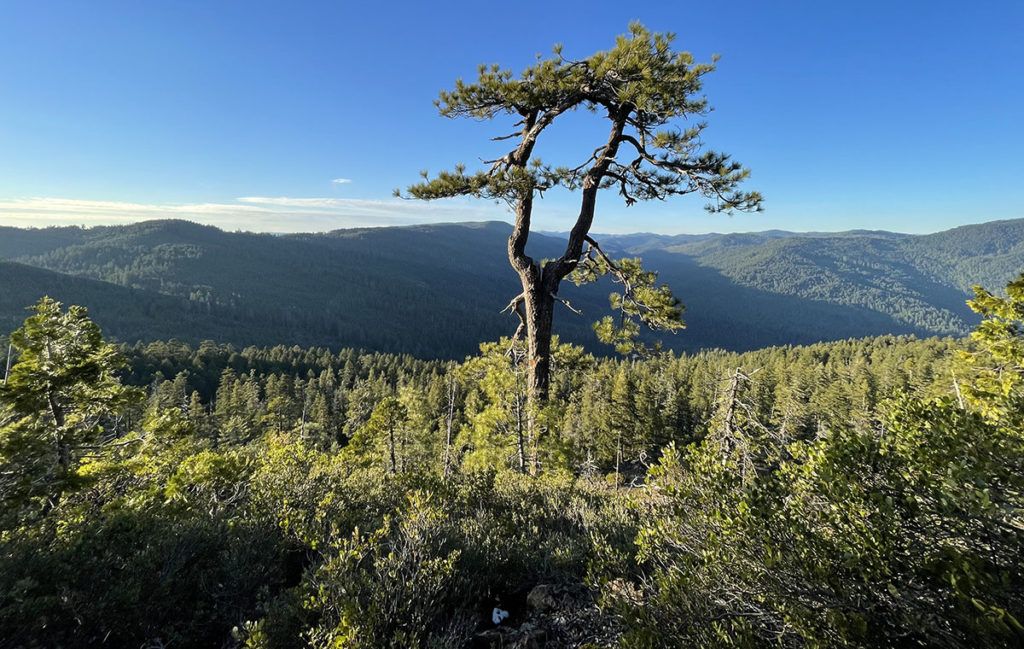
At middle to higher elevations along ridgelines and on southern aspects (often along travel routes) cultural burning and fuelwood practices favored sugar pine/manzanita (Arctostaphylos spp.) dominated ridge systems. Here, fires intensify near the upper ridges on southern aspects and frequent burning kept the ridge trail systems clear, reduce surface and ladder fuels, and increased drought-tolerant/fire adapted plant species.
These practices tended sugar pines for food, medicine, and materials, as well as manzanitas for food (berries/sugar), wood (fuel/heating/ceremonies), and medicines (bark/leaves). Wildlife also benefited from these open ridge systems for travel, foraging, and seasonal occupancy ranging from tribally sought game and regalia species of birds, reptiles, and mammals.
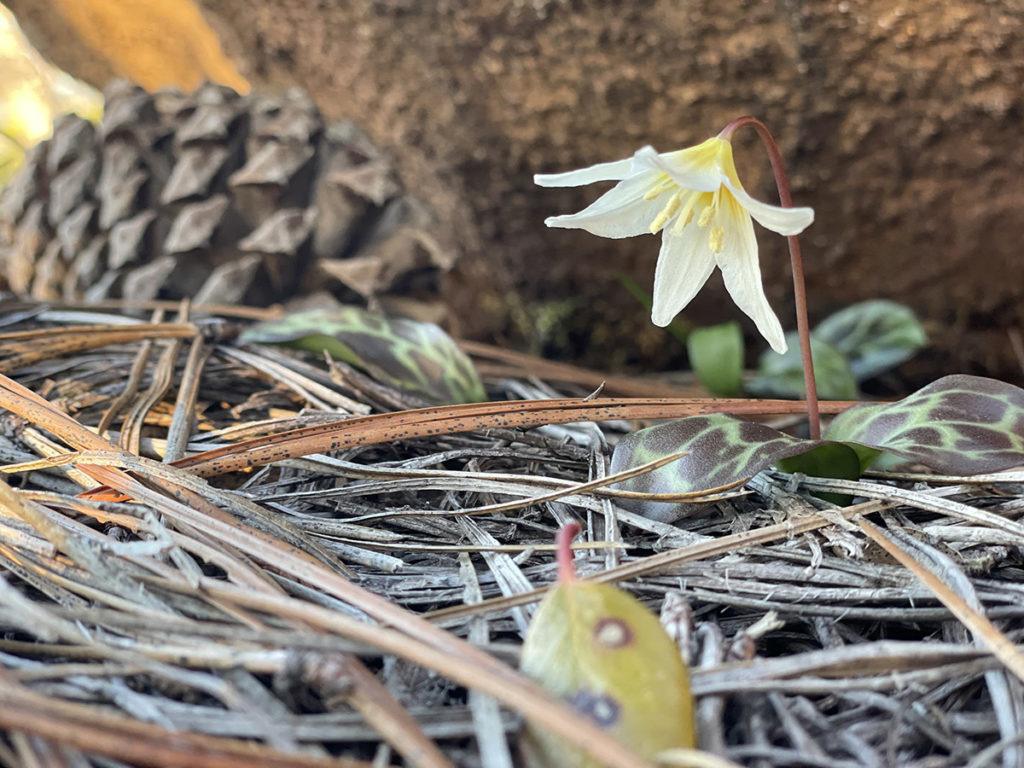
I will continue to revisit and rethink my understanding of landscapes and vegetation communities over space and time because of what I am learning about traditional agroforestry and burning systems. I look forward to furthering my understandings thanks to the wealth of Traditional Ecological Knowledge in the Klamath Mountain Region.
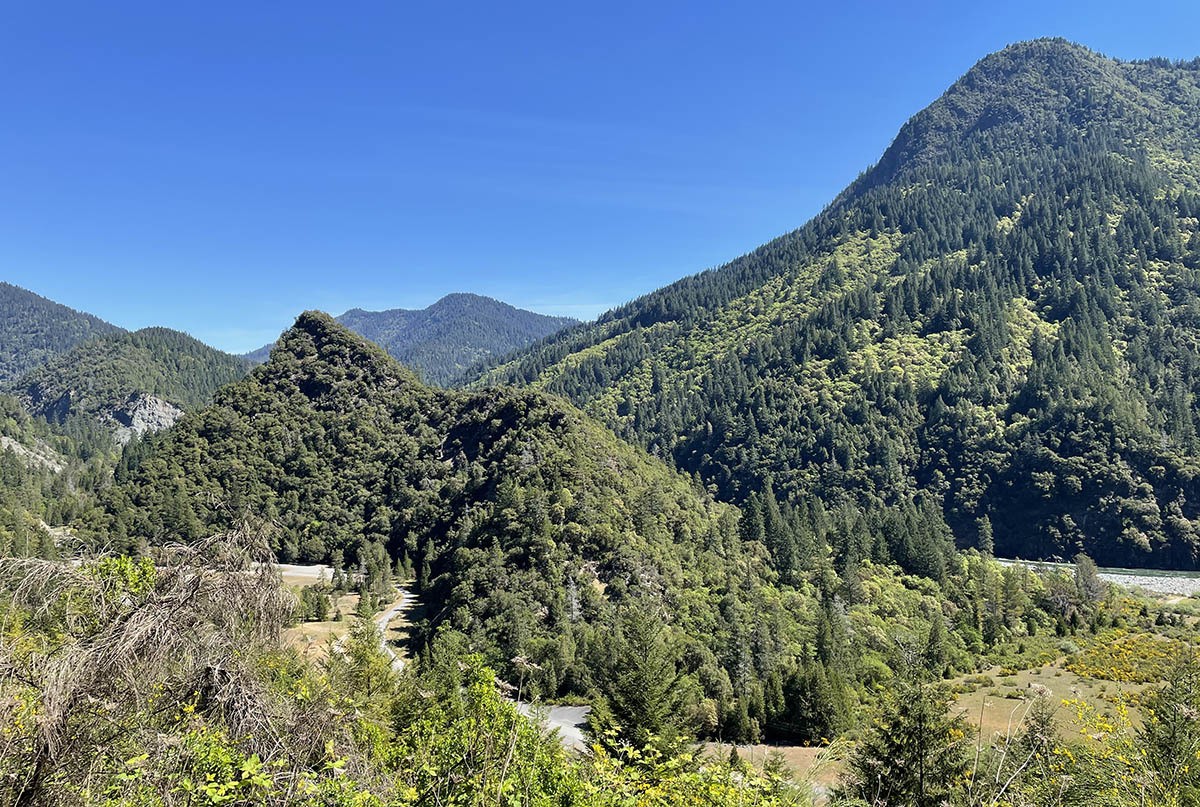



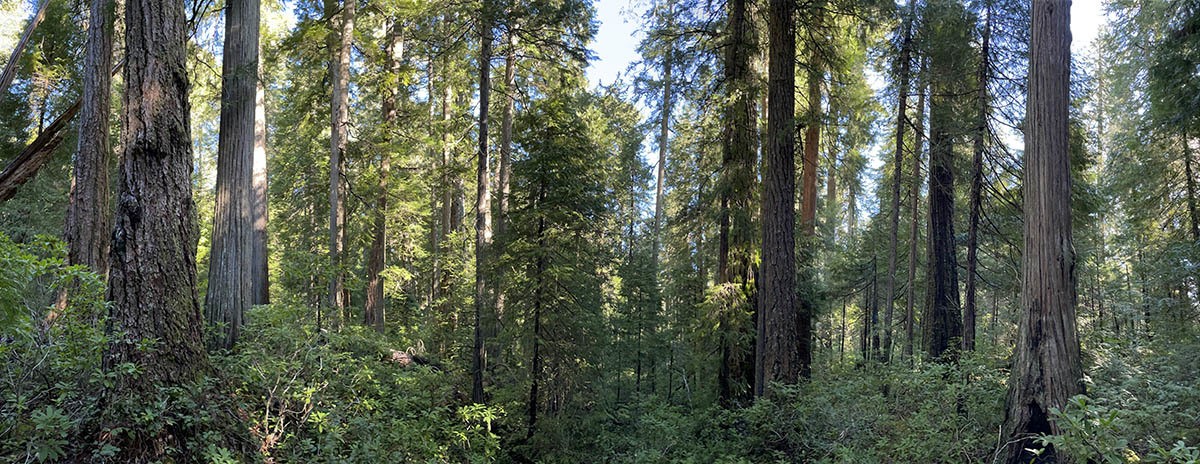
Sources
Lake, Frank. 2021. The Klamath Mountains: A Natural History — First People Chapter. Unpublished. Planned December 2021 release.
Fisher, J.A. et al. 2019. Indigenous peoples’ habitation history drives present day forest biodiversity in British Columbia’s coastal temperate rainforest. People Nat. 1: 103– 114.
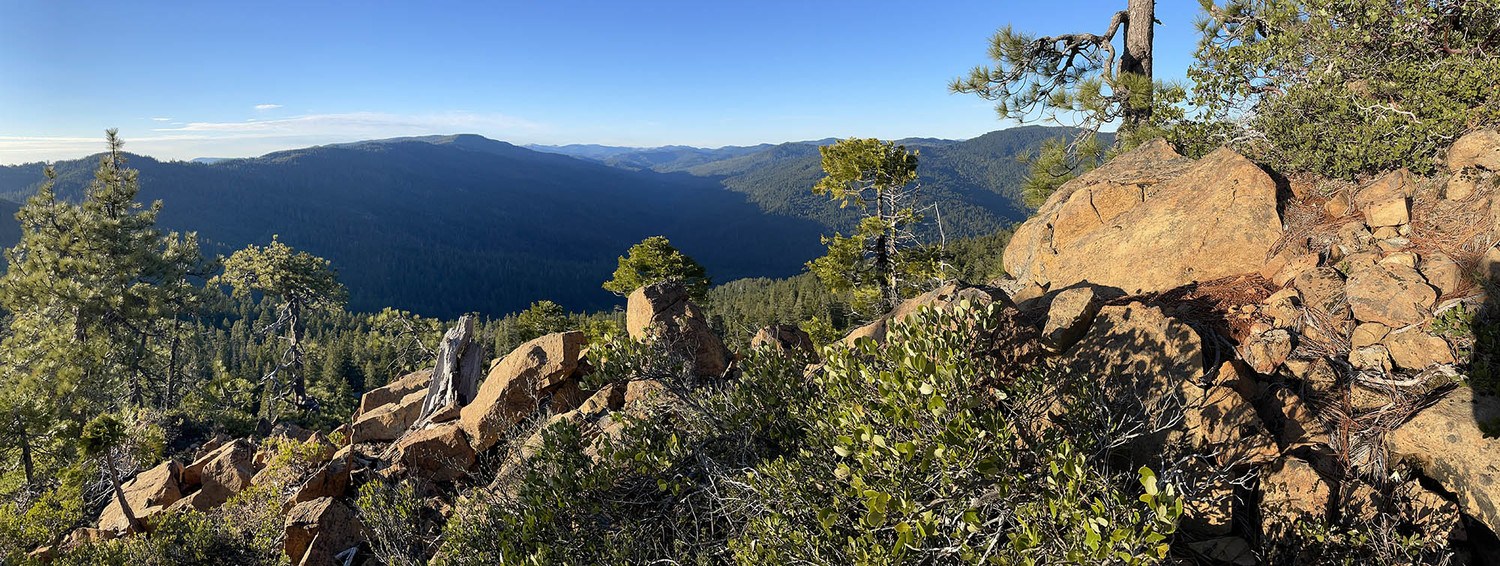
For some of us, one of the saddest developments of recent years has been the increasing loss of giant sugar pines to fire. Your article gives interesting insight into how careful tending of ridgeline vegetation, continuously for hundreds of years, may have made possible the growth and long survival of sugar pines in those areas. With those practices having been disrupted for the past 120 years or so, those old trees may have been greatly endangered. Many of the pines that I’m thinking of are close to modern trails that very likely follow, to a greater or lesser degree, the routes of trails that the Karuk and Yurok used and maintained. Some trails have been extensively modernized, while others have been left in a primitive state, and may be little altered from their pre-1850 appearance.
Old sugar pine adventitiously send feeder roots into the duff layer. When that layer gets deep, fewer roots remain active in the lower soil horizons, and even a modest ground fire can kill enormous ancient trees. To return to a sustainable fire regime, we may need to first apply very early spring burning to provide redirection of those root systems. Along the Crater Lake Highway, huge sugar pine were raked around as thinning of small conifers was done prior to light under burning with favorable results.
Very interesting, Dean. In some of the locations affected by the 2017 Haypress Fire in the Marble Mountain Wilderness and land bordering it, sugar pine trunks didn’t show serious damage, and the trees initially appeared to have kept enough foliage that one would have thought they would have made it. But they soon died. Maybe the root damage you describe was the culprit.
Thanks for adding to the discussion Dean and Chris. It is sad to see the decline in sugar pine indeed. Forest encroachment has been challenging for shade-intolerant species like pines.
In my research on topic of indigenous influence over the years, I found there’s much speculation and a lot we likely won’t ever know, which translates into widely differing opinions on the relative impact of indigenous cultures in different places at different times. One point I think worth considering tho is that “studies examining whether Native burning had a significant influence on plant communities have not shown any significant effect across the landscape. In areas around villages and other major population centers, burning did affect vegetation, but these influences were limited.” Not saying this perspective is most accurate, but definitely worth considering alongside the supposition that “native ppl engineered the entire landscape”.
http://www.thewildlifenews.com/2021/06/01/indian-culpability-in-bison-demise/#comments
Evan- Thanks for sharing your thoughts. I agree with you but hope this post conveys that western science often (as least historically) overlooks the impacts Native People have had on vegetation patterns — whether that is increasing biodiversity around village sites, planting geophytes for food, or clearing ridgelines as travel routes. I do agree that entire landscapes were not engineered but thinking about how some engineering occurred is important.
This is an interesting perspective. I tend to agree with the hypothesis that cultural burning didn’t have uniform impacts on the varied landscapes in the Klamath Mtns., and in particular, very likely native peoples didn’t practice frequent burning of extensive tracts of high elevation forest.
However, I think the overriding fact to keep in mind is that the North American indigenous peoples were a highly diverse group, and that practices varied greatly from place to place, and even across landscapes within any one people’s ancestral territory. (It’s historically been a European conceit to treat native Americans as a homogeneous bunch, because it made the politics of dealing with them so much easier, subjectively. Governments preferred to be able to say, “Take me to your leader.” Which wouldn’t work with peoples that had no tradition of centralized government. E.g., the Yurok never considered themselves a “tribe,” leading to a disconnect that probably worsened Yurok relations with the U.S. government in some ways.)
So some landscapes may have been widely and heavily influenced by indigenous burning, while others may have been little influenced. Really, one has to do the hard work of studying, place by place, where and how burning affected vegetation over the course of hundreds of years. In many cases, that information may be extremely difficult to come by at this late date. Even if past intentional burning wasn’t as extensive as some have theorized, it very likely had an asymmetrical impact on many of the places that are especially interesting from the standpoint of botanical diversity, wildlife use, scenic landscapes, traditional human use, and modern recreational use. Such as riparian corridors, ridgetop travel routes, lowland old growth forests, meadows, and prairies.